Themed collection Editors’ collection: Graphene

A review on graphene-based nanocomposites for electrochemical and fluorescent biosensors
Biosensors with high sensitivity, selectivity and a low limit of detection, reaching nano/picomolar concentrations of biomolecules, are important to the medical sciences and healthcare industry for evaluating physiological and metabolic parameters.
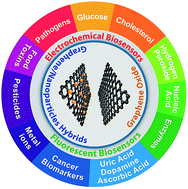
RSC Adv., 2019,9, 8778-8881
https://doi.org/10.1039/C8RA09577A
Graphene/Si Schottky solar cells: a review of recent advances and prospects
The structure and mechanism of graphene/silicon solar cells, and several key strategies to improve the performance of the cells.

RSC Adv., 2019,9, 863-877
https://doi.org/10.1039/C8RA08035F
Polyolefin/graphene nanocomposites: a review
The present article is mainly focused on literature studies centred on polyolefin (especially PE and PP) nanocomposites based on graphene and its derivatives.
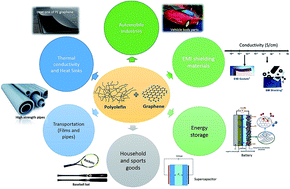
RSC Adv., 2017,7, 23615-23632
https://doi.org/10.1039/C6RA28392F
Graphene, hexagonal boron nitride, and their heterostructures: properties and applications
In recent years, two-dimensional atomic-level thickness crystal materials have attracted widespread interest such as graphene, hexagonal boron nitride (h-BN), silicene, germanium, black phosphorus (BP), transition metal sulfides and so on.
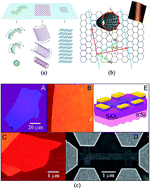
RSC Adv., 2017,7, 16801-16822
https://doi.org/10.1039/C7RA00260B
Review of the synthesis, transfer, characterization and growth mechanisms of single and multilayer graphene
Graphene has emerged as the most popular topic in the active research field since graphene's discovery in 2004 by Andrei Geim and Kostya Novoselov.
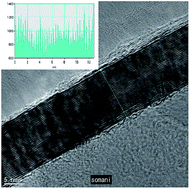
RSC Adv., 2017,7, 15644-15693
https://doi.org/10.1039/C7RA00392G
Antibody-modified reduced graphene oxide film for circulating tumor cell detection in early-stage prostate cancer patients
We report the fabrication of an antibody-modified reduced graphene oxide film, which can be used to efficiently detect CTCs in PCa patients with PSA levels of 4–10 ng mL−1.
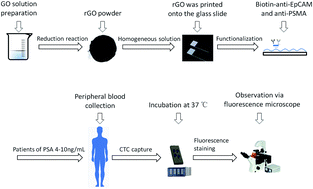
RSC Adv., 2019,9, 9379-9385
https://doi.org/10.1039/C8RA08682F
Origin of the anomalous size-dependent increase of capacitance in boron nitride–graphene nanocapacitors
The anomalous size-dependent increase in capacitance in boron nitride–graphene nanocapacitors is a puzzle that has been initially attributed to the negative quantum capacitance exhibited by this particular materials system.
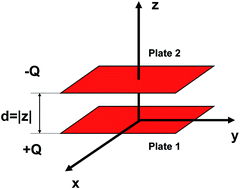
RSC Adv., 2019,9, 7849-7853
https://doi.org/10.1039/C9RA00614A
Comparison of performance and biofouling resistance of thin-film composite forward osmosis membranes with substrate/active layer modified by graphene oxide
The substrate modified by GO could greatly improve water flux, whereas the GO-functionalized active layer is favorable for biofouling mitigation.
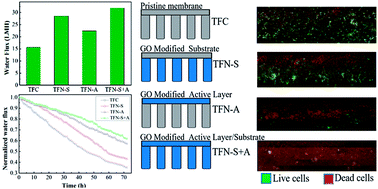
RSC Adv., 2019,9, 6502-6509
https://doi.org/10.1039/C8RA08838A
Effect of nitrogen-doping configuration in graphene on the oxygen reduction reaction
The oxygen reduction reaction (ORR) reactivity of various nitrogen-doped graphene configurations are probed in detail using density functional theory (DFT) calculations.

RSC Adv., 2019,9, 6035-6041
https://doi.org/10.1039/C8RA08576E
Influence of cooling-induced edge morphology evolution during chemical vapor deposition on H2 etching of graphene domains
The entire morphological variation of CVD graphene during cooling and etching.

RSC Adv., 2019,9, 5865-5869
https://doi.org/10.1039/C8RA09265F
Unveiling the thickness-dependent mechanical properties of graphene papers by in situ SEM tension
We prepared graphene paper (GP) using graphene sheets of different thickness. The fracture strength of the GP was assessed by uniaxial in-plane tensile tests using an in situ scanning electron microscope.
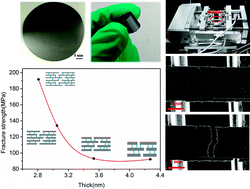
RSC Adv., 2019,9, 4609-4615
https://doi.org/10.1039/C8RA09818B
Controllable reduction of graphene oxide by electron-beam irradiation
The oxygen content of graphene oxide (GO) is directly related to its physical and chemical properties, such as hydrophilicity, suspension stability, adsorption, and ion-sieving ability of GO membranes.
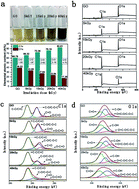
RSC Adv., 2019,9, 3597-3604
https://doi.org/10.1039/C8RA06797J
Liquid-phase exfoliation of graphite into graphene nanosheets in a hydrocavitating ‘lab-on-a-chip’
Graphene nanosheets were exfoliated from hydrodynamic cavitation performed inside a microchannel.
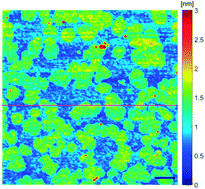
RSC Adv., 2019,9, 3232-3238
https://doi.org/10.1039/C8RA05976D
Uniform nanoporous graphene sponge from natural polysaccharides as a metal-free electrocatalyst for hydrogen generation
Structuring of graphene as graphene sponges in the submicrometric scale has been achieved by using silica spheres (80 nm diameter) as hard templates and chitosan or alginate as precursor of defective N-doped or undoped graphene, respectively.
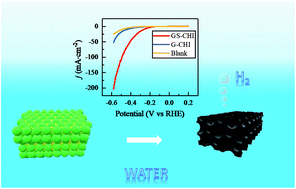
RSC Adv., 2019,9, 99-106
https://doi.org/10.1039/C8RA08745H
Influence of atmospheric species on the electrical properties of functionalized graphene sheets
We report on the time-dependent influence of atmospheric species on the electrical properties of functionalized graphene sheets (FGSs).
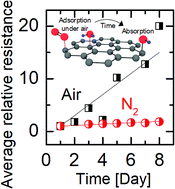
RSC Adv., 2018,8, 42073-42079
https://doi.org/10.1039/C8RA08227H
Growth temperature dependence of nitrogen doped graphene structure on Pt (111) and analysis of its reactivity with oxygen
Nitrogen doping is an effective method for modulating the electronic states and properties of graphene. Pyridinic nitrogen enhances the reactivity with oxygen.
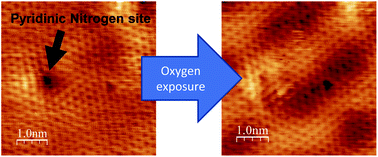
RSC Adv., 2018,8, 34309-34313
https://doi.org/10.1039/C8RA06962J
The chemical functionalization of graphene nanoplatelets through solvent-free reaction
Carboxyl-terminated pyrrolidine functionalized graphene nanoplatelets through a solvent-free reaction.

RSC Adv., 2018,8, 33564-33573
https://doi.org/10.1039/C8RA04817G
Photo-induced antibacterial activity of four graphene based nanomaterials on a wide range of bacteria
Antibacterial potentials of four graphene based nanomaterials are tested on a wide range of bacteria.
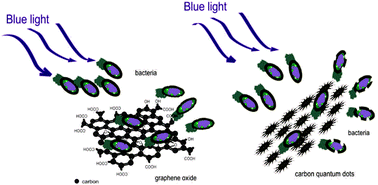
RSC Adv., 2018,8, 31337-31347
https://doi.org/10.1039/C8RA04664F
One-pot synthesis of graphene quantum dots and simultaneous nanostructured self-assembly via a novel microwave-assisted method: impact on triazine removal and efficiency monitoring
Graphene quantum dot (GQDs) assemblies from a one-step microwave reaction as bifunctional materials in remediation of triazines.
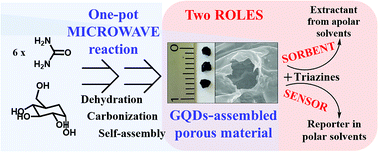
RSC Adv., 2018,8, 29939-29946
https://doi.org/10.1039/C8RA04286A
Graphene based photoanode for DSSCs with high performances
Graphene assisted photoanodes are promising because of the high performance of the resulting dye sensitized solar cells (DSSCs).
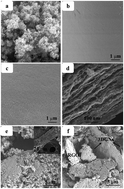
RSC Adv., 2018,8, 29220-29227
https://doi.org/10.1039/C8RA05211E
Tribological behavior of in situ fabricated graphene–nickel matrix composites
Graphene protects nickel from severe oxidation and forms carbon-rich tribofilms containing disordered amorphous carbon and ordered polymers by tribo-chemical reactions.

RSC Adv., 2018,8, 22113-22121
https://doi.org/10.1039/C8RA02510J
Graphene nanoplatelets-sericin surface-modified Gum alloy for improved biological response
GNP–SS functionalized Gum alloy exhibits superior bioactivity in inducing in vitro osteogenesis.
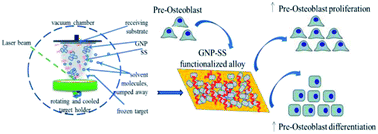
RSC Adv., 2018,8, 18492-18501
https://doi.org/10.1039/C8RA01784K
Graphene-based surface heater for de-icing applications
We report a scalable process of making highly conductive graphene-based glass fibre rovings and their integration into a vacuum infused epoxy–glass fabric composite. We then demonstrate the potential use of as prepared composites for de-icing applications.

RSC Adv., 2018,8, 16815-16823
https://doi.org/10.1039/C8RA02567C
Water wettability of graphene: interplay between the interfacial water structure and the electronic structure
Wettability of graphene is characterized from first principles.

RSC Adv., 2018,8, 16918-16926
https://doi.org/10.1039/C8RA03509A
Graphene inclusion controlling conductivity and gas sorption of metal–organic framework
Changed electrochemical activity and CO2/H2O adsorption by graphene inclusion in Cu3(1,3,5-benzenetricarboxylate)2 and covalent tethering to glassy carbon electrodes.
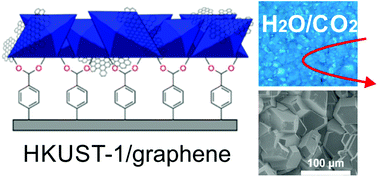
RSC Adv., 2018,8, 13921-13932
https://doi.org/10.1039/C8RA02439A
Temperature-tuned ferromagnetism in hydrogenated multilayer graphene
Hydrogenated multilayer graphene was prepared by a facile electrochemical cathodic method and its ferromagnetism was tuned through thermal annealing.
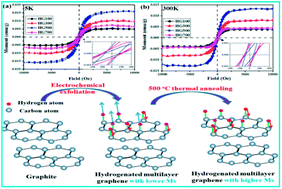
RSC Adv., 2018,8, 13148-13153
https://doi.org/10.1039/C8RA02648C
Tune the chemical activity of graphene via the transition metal substrate
The chemical activity of graphene can be tuned by the transition metal substrate.
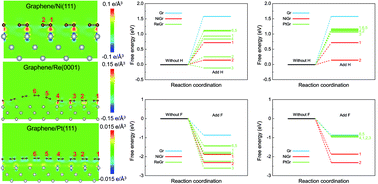
RSC Adv., 2018,8, 11807-11812
https://doi.org/10.1039/C8RA00735G
Thermal property improvement of polytetrafluoroethylene nanocomposites with graphene nanoplatelets
Adding GNPs into PTFE can significantly improve the thermal properties of nanocomposites.

RSC Adv., 2018,8, 11367-11374
https://doi.org/10.1039/C8RA01047A
Boron-doped graphene as a metal-free catalyst for gas-phase oxidation of benzyl alcohol to benzaldehyde
Boron doped graphene for the oxidative dehydrogenation reactions.
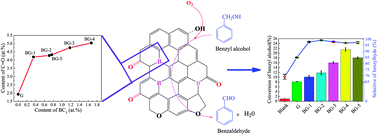
RSC Adv., 2018,8, 11222-11229
https://doi.org/10.1039/C8RA00290H
Interface engineering of graphene–silicon Schottky junction solar cells with an Al2O3 interfacial layer grown by atomic layer deposition
One approach to improve Gr/Si SBSC performance is engineering the interface with an interfacial layer. We demonstrate the improved performance of Gr/Si SBSC upon engineering the interface with an aluminium oxide (Al2O3) layer grown by atomic layer deposition (ALD)..
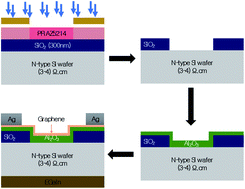
RSC Adv., 2018,8, 10593-10597
https://doi.org/10.1039/C7RA13443F
Sulfonated graphene oxide/Nafion composite membranes for high temperature and low humidity proton exchange membrane fuel cells
Preparation process of Nafion/Fe3O4–SGO composite membranes.
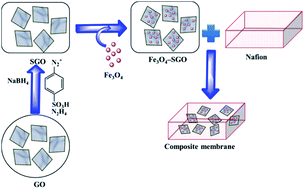
RSC Adv., 2018,8, 7494-7508
https://doi.org/10.1039/C7RA12768E
Synergistic effects of zeolite imidazole framework@graphene oxide composites in humidified mixed matrix membranes on CO2 separation
In this study, composite nanosheets (ZIF-8@GO) were prepared via an in situ growth method and then incorporated into a polyimide (PI) matrix to fabricate mixed matrix membranes (MMMs) for CO2 separation.
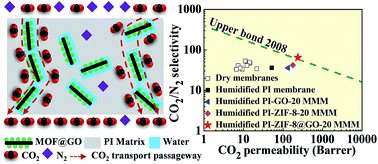
RSC Adv., 2018,8, 6099-6109
https://doi.org/10.1039/C7RA09794H
One-pot synthesis of amine-functionalized graphene oxide by microwave-assisted reactions: an outstanding alternative for supporting materials in supercapacitors
A simple and straightforward method using microwave-assisted reactions is presented for the functionalization of graphene oxide with aromatic and non-aromatic amines.

RSC Adv., 2018,8, 6136-6145
https://doi.org/10.1039/C7RA13514A
Defined covalent assembly of protein molecules on graphene using a genetically encoded photochemical reaction handle
We demonstrate a general method for photochemically-induced covalent attachment of proteins to graphene through the introduction of a non-canonical amino acid p-azido-L-phenylalanine into defined residue positions.

RSC Adv., 2018,8, 5768-5775
https://doi.org/10.1039/C7RA11166E
Bending energy of 2D materials: graphene, MoS2 and imogolite
The bending process of 2D materials, subject to an external force, is investigated, and applied to graphene, molybdenum disulphide (MoS2), and imogolite.
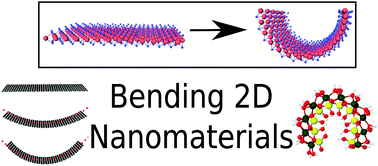
RSC Adv., 2018,8, 4577-4583
https://doi.org/10.1039/C7RA10983K
Synthesis and characterization of graphene oxide sheets integrated with gold nanoparticles and their applications to adsorptive removal and catalytic reduction of water contaminants
Preparation of graphene oxide–gold (GO–Au) nanocomposites as adsorbents and catalysts for decontamination of water.
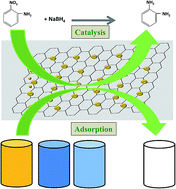
RSC Adv., 2018,8, 3599-3610
https://doi.org/10.1039/C7RA12030C
Interaction between functionalized graphene and sulfur compounds in a lithium–sulfur battery – a density functional theory investigation
Functionalized graphene can successfully anchor sulfur compounds via moderate interactions, leading to improved conductivity and charge transfer in the cathode of Li–S batteries.
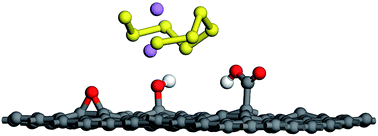
RSC Adv., 2018,8, 2271-2279
https://doi.org/10.1039/C7RA11628D
A label-free electrochemical platform for the highly sensitive detection of hepatitis B virus DNA using graphene quantum dots
Based on the interaction between single-stranded probe DNA and graphene quantum dots (GQDs), we have designed a simple but smart electrochemical platform to detect HBV-DNA by using GQDs modified glassy carbon electrode coupled with probe DNA.
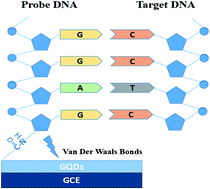
RSC Adv., 2018,8, 1820-1825
https://doi.org/10.1039/C7RA11945C
Enhanced electron transfer mediated detection of hydrogen peroxide using a silver nanoparticle–reduced graphene oxide–polyaniline fabricated electrochemical sensor
The current study aims at the development of an electrochemical sensor based on a silver nanoparticle–reduced graphene oxide–polyaniline (AgNPs–rGO–PANI) nanocomposite for the sensitive and selective detection of hydrogen peroxide (H2O2).
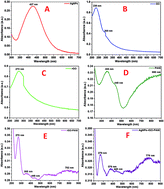
RSC Adv., 2018,8, 619-631
https://doi.org/10.1039/C7RA11466D
Graphene oxide as an additive to improve perovskite film crystallization and morphology for high-efficiency solar cells
The quality of perovskite film has a great impact on its light absorption and carrier transport, which is vital to improve high-efficiency perovskite solar cells (PSCs).
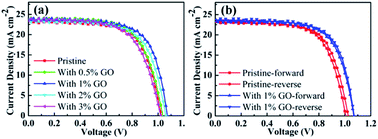
RSC Adv., 2018,8, 987-993
https://doi.org/10.1039/C7RA12049D
Magnetic CoFe2O4 nanoparticles supported on graphene oxide (CoFe2O4/GO) with high catalytic activity for peroxymonosulfate activation and degradation of rhodamine B
Herein, we report the preparation of magnetic CoFe2O4 nanoparticles and CoFe2O4/graphene oxide (GO) hybrids and evaluate their catalytic activity as heterogeneous peroxymonosulfate (PMS) activators for the decomposition of rhodamine B.
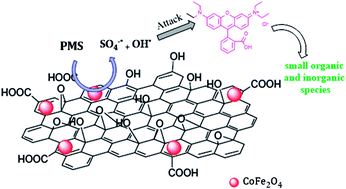
RSC Adv., 2018,8, 1351-1360
https://doi.org/10.1039/C7RA09949E
Graphene-based anticorrosive coatings for copper
The present study was focused on the development of environmentally friendly graphene-based anti-corrosive coatings and understanding the effect of these coatings on the electrochemical corrosion behavior of copper.
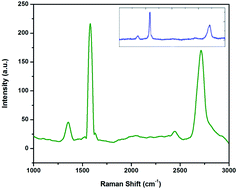
RSC Adv., 2018,8, 499-507
https://doi.org/10.1039/C7RA10167H
An electrochemical MIP sensor for selective detection of salbutamol based on a graphene/PEDOT:PSS modified screen printed carbon electrode
The first MIP sensor on an inkjet-printed graphene nanocomposite modified screen-printed carbon electrode was developed.
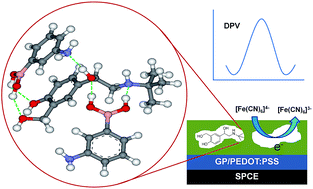
RSC Adv., 2018,8, 206-212
https://doi.org/10.1039/C7RA09601A
Value of mir-247 in warning of graphene oxide toxicity in nematode Caenorhabditis elegans
Our results imply the important potential of mir-247 in warning the formation of GO toxicity in the range of μg L−1 in nematodes.
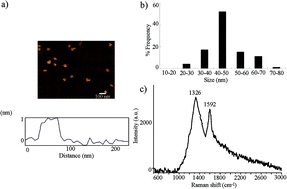
RSC Adv., 2017,7, 52694-52701
https://doi.org/10.1039/C7RA09100A
Electrochemical deposition of nickel graphene composite coatings: effect of deposition temperature on its surface morphology and corrosion resistance
The present work describes the fabrication of Ni–graphene composite coatings on carbon steel at different deposition temperatures (15 °C, 30 °C, 45 °C and 60 °C, respectively) by an electrochemical codeposition method.
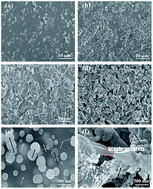
RSC Adv., 2017,7, 31100-31109
https://doi.org/10.1039/C6RA28755G
Synthesis and characterization of sulfophenyl-functionalized reduced graphene oxide sheets
We report modification of graphene oxide by thermal reduction to obtain reduced graphene oxide and subsequent functionalization with sulfophenyl groups to obtain SRGO as well as the characterization of these materials by TGA-MS.
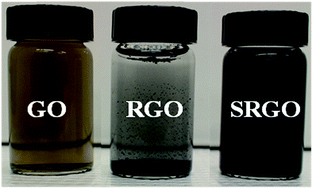
RSC Adv., 2017,7, 27224-27234
https://doi.org/10.1039/C6RA28311J
Three-dimensional reduced graphene oxide powder for efficient microwave absorption in the S-band (2–4 GHz)
Three-dimensional reduced graphene oxide (3D-rGO) powders are synthesized and demonstrate remarkably enhanced microwave absorption in the S-band (2–4 GHz).
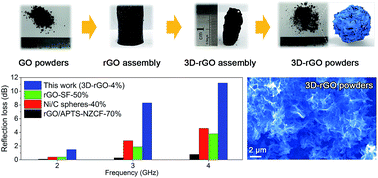
RSC Adv., 2017,7, 25773-25779
https://doi.org/10.1039/C7RA03215C
One-step synthesis of band-tunable N, S co-doped commercial TiO2/graphene quantum dots composites with enhanced photocatalytic activity
N, S co-doped commercial TiO2/N, S-GQDs graphene quantum dots (NSTG) composites with band tunability are synthesized via a facile solvothermal treatment in the presence of thiourea, which acts as a precursor for the dopants.
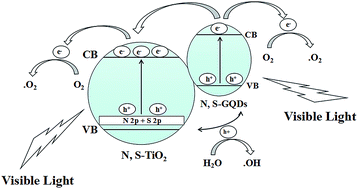
RSC Adv., 2017,7, 23319-23327
https://doi.org/10.1039/C7RA01856H
Efficient interfacial interaction for improving mechanical properties of polydimethylsiloxane nanocomposites filled with low content of graphene oxide nanoribbons
GONR-filled H-t-PDMS nanocomposites were fabricated by using a facile solvent-free process, and the reinforcement efficiency of GONRs at low filler content is superior to those of the other carbon nano-fillers.
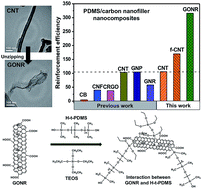
RSC Adv., 2017,7, 22045-22053
https://doi.org/10.1039/C7RA02439H
Adsorption of mercury(II) with an Fe3O4 magnetic polypyrrole–graphene oxide nanocomposite
The Fe3O4 magnetic polypyrrole–graphene (PPy–GO) has a Langmuir adsorption capacities of 400.0 mg g−1 for Hg(II). And it has a favorable saturation magnetization of 19.0 emu g−1, easily separated from solutions via additional exterior magnets.
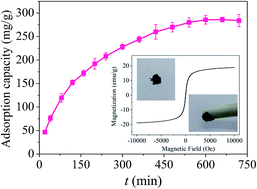
RSC Adv., 2017,7, 18466-18479
https://doi.org/10.1039/C7RA01147D
Graphene quantum dot-based theranostic agents for active targeting of breast cancer
A novel GQD-complex was designed as a promising theranostic agent for the treatment of HER2-positive breast cancer.
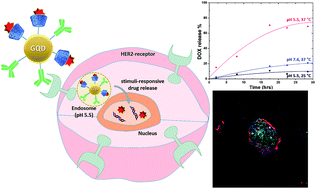
RSC Adv., 2017,7, 11420-11427
https://doi.org/10.1039/C6RA25949A
Heavy metals removal by EDTA-functionalized chitosan graphene oxide nanocomposites
Graphene-based two-dimensional materials have been explored in a variety of applications, including the treatment of heavy-metal-rich water/wastewater.
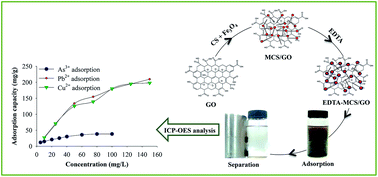
RSC Adv., 2017,7, 9764-9771
https://doi.org/10.1039/C6RA28406J
Graphene/polyaniline@carbon cloth composite as a high-performance flexible supercapacitor electrode prepared by a one-step electrochemical co-deposition method
A one-step electrochemical co-deposition method was used to prepare a graphene/polyaniline composite on carbon cloth for high-performance flexible supercapacitors.

RSC Adv., 2017,7, 7688-7693
https://doi.org/10.1039/C6RA27545A
Hydrothermal assisted in situ growth of CoSe onto graphene nanosheets as a nanohybrid positive electrode for asymmetric supercapacitors
Cobalt selenide–graphene (CoSe–G) nanohybrid was successfully synthesised by a one-pot hydrothermal method and used as a positive electrode for asymmetric supercapacitor, which provides an energy density of 45.5 W h kg−1 and a power density of 1.1 kW kg−1.
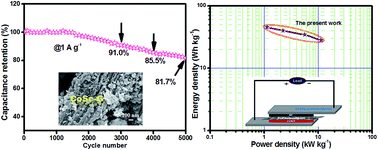
RSC Adv., 2017,7, 5853-5862
https://doi.org/10.1039/C6RA25078E
Lipase immobilization on facile synthesized polyaniline-coated silver-functionalized graphene oxide nanocomposites as novel biocatalysts: stability and activity insights
Schematic representation of the preparation of PANI/Ag/GO-NCs and immobilization of lipase.
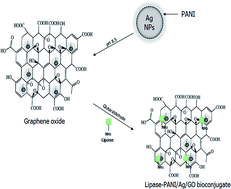
RSC Adv., 2017,7, 5019-5029
https://doi.org/10.1039/C6RA27926K
A facile synthesis of Cu–Ni bimetallic nanoparticle supported organo functionalized graphene oxide as a catalyst for selective hydrogenation of p-nitrophenol and cinnamaldehyde
We report a facile and environmentally friendly protocol for the synthesis of novel mono-dispersed Cu and Ni bimetallic alloy particles supported on fibrous anime functionalized graphene oxide (GO).
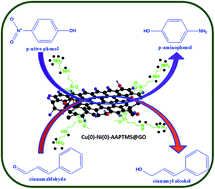
RSC Adv., 2017,7, 2869-2879
https://doi.org/10.1039/C6RA26443C
MnS nanocomposites based on doped graphene: simple synthesis by a wet chemical route and improved electrochemical properties as an electrode material for supercapacitors
Nanocomposites of MnS anchored on graphene, nitrogen-doped graphene and boron-doped graphene have been prepared by a simple wet chemical process.
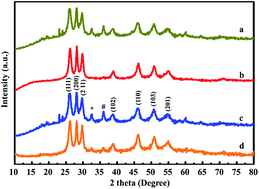
RSC Adv., 2017,7, 2249-2257
https://doi.org/10.1039/C6RA25457H
Synthesis of graphene oxide/polyimide mixed matrix membranes for desalination
Graphene oxide (GO) was incorporated into polyimide (PI) to fabricate GO/PI mixed matrix membranes (MMMs), which show a high water flux (36.1 kg m−2 h−1) and a high salt rejection (99.9%) for desalination of 3.5 wt% seawater at 90 °C.

RSC Adv., 2017,7, 2211-2217
https://doi.org/10.1039/C6RA24974D
A novel ionic liquid functionalized graphene oxide supported gold nanoparticle composite film for sensitive electrochemical detection of dopamine
A simple and sensitive electrochemical sensor for detection of dopamine has been developed based on ionic liquid functionalized graphene oxide supported gold nanoparticles (GO-IL-AuNPs) coated onto a glassy carbon electrode.
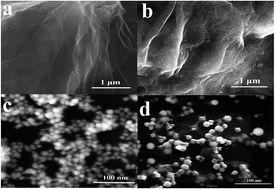
RSC Adv., 2017,7, 2315-2322
https://doi.org/10.1039/C6RA25627A
Solar mediated reduction of graphene oxide
This paper explores the reduction of water dispersed graphene oxide (GO) by sunlight. The electronic and structural properties of the sunlight reduced GO are compared with that of GO reduced by conventional methods.
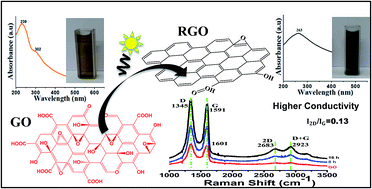
RSC Adv., 2017,7, 957-963
https://doi.org/10.1039/C6RA24696F
Mn3O4/graphene nanocomposites: outstanding performances as highly efficient photocatalysts and microwave absorbers
Mn3O4 incorporated graphenes synthesized by a deposition-solvothermal process were efficiently used for methylene blue degradation under visible illumination (88 W, λ > 420 nm) and under microwave irradiation (800 W, 2.45 GHz, 373 K).
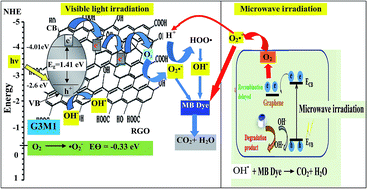
RSC Adv., 2017,7, 826-839
https://doi.org/10.1039/C6RA24815B
Microwave assisted fabrication of a nanostructured reduced graphene oxide (rGO)/Fe2O3 composite as a promising next generation energy storage material
A supercapacitor electrode material, rGO–Fe2O3 composite, prepared by a facile microwave assisted in situ technique, delivers a high specific capacitance of 577.5 F g−1 at a current density of 2 A g−1 with a long cycle life and high rate performance.
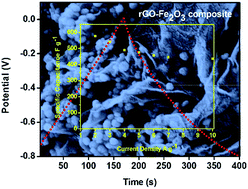
RSC Adv., 2017,7, 309-317
https://doi.org/10.1039/C6RA24766K
About this collection
Graphene has become a tool that can open new research lines in all branches of science. This collection of articles, guest edited by Associate Editor Pablo Denis (Universidad de la Republica Oriental del Uruguay), covers a wide range of topics and reflects the broad spectrum of authors and readers of RSC Advances, including Nobel Prize winners. It includes contributions on catalysis, drug delivery, sensing, renewable energies, synthesis, theoretical chemistry, water purification, thermal/mechanical properties, polymer chemistry, cancer treatments and even microwave radiation protecting materials. It is our expectation that this collection can elicit new investigations about graphene-based nanomaterials, as well as new submissions.